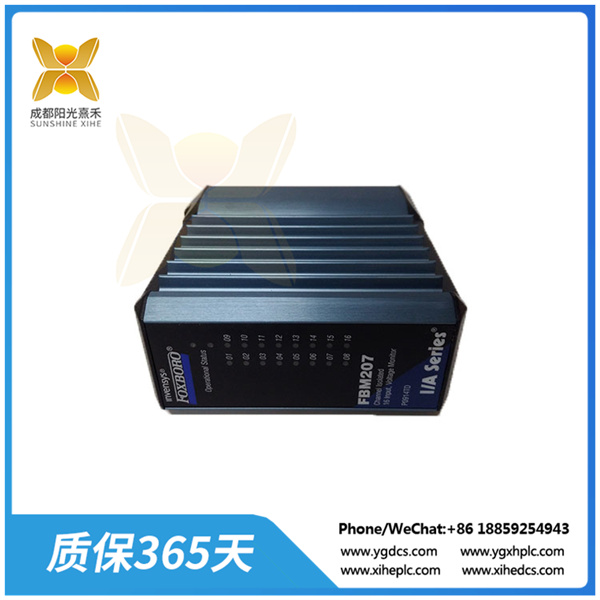FBM10 | 字输出模块 | 用于监测和控制工艺参数

FOXBOROFBM10 是一种数字输出模块,通常用于工业自动化和控制系统中,以将数字信号发送到外部设备或执行特
定的控制操作。这些模块允许自动化系统与外部设备进行数字通信和控制。
以下是有关 FOXBORO FBM10 数字输出模块的一些可能特点和应用领域:
控制系统集成:这种类型的数字输出模块通常用于工业控制系统中,如分散控制系统(DCS)或可编程逻辑控制器
(PLC),以控制和监测工厂中的设备和过程。
信号输出:FBM10 模块可以用于将数字信号发送到执行器、阀门、马达、灯光或其他外部设备,以控制其状态或执行特
走的动作。
过程控制:在化工、石油和天然气、电力等行业,这种模块可以用于监测和控制工艺参数,例如温度、压力、液位等
以确保工业过程的卖全性和效率。
报警和通知:数字输出模块还可以用于生成报警和通知信号,以在发生故障或紧急情况时通知操作人员或触发相应的应
急措施。
自动化设备:它们还可以嵌入到自动化设备中,以实现特定的控制和操作功能,例如自动门、机器人、输送带等。
频率或脉宽的转换
优点:可以表示连续变化的信号,精度高,
缺点:需要设计精确的计时器或PWM控制器,对于高频信号的测量和控制有一
定的难度。
脉冲编码调制(PCM):
优点:精度高,动态范围大,适合传输高质量的声音和图像信号
缺点:需要高速的采样和量化设备,对于大规模的数据传输有一定的限制。

FOXBOROFBM10 is a digital output module commonly used in industrial automation and control systems to send digital signals to external devices or actuators
Set the control operation. These modules allow automated systems to digitally communicate and control with external devices.
Here are some possible features and application areas for the FOXBORO FBM10 digital output module:
Control System Integration: This type of digital output module is commonly used in industrial control systems, such as distributed control systems (DCS) or programmable logic controllers
(PLC) to control and monitor equipment and processes in the plant.
Signal output: The FBM10 module can be used to send digital signals to actuators, valves, motors, lights, or other external devices to control their status or execute
The act of walking.
Process control: In the chemical, oil and gas, power and other industries, this module can be used to monitor and control process parameters such as temperature, pressure, liquid level, etc
To ensure the marketability and efficiency of industrial processes.
Alarm and notification: The digital output module can also be used to generate alarm and notification signals to notify the operator or trigger the appropriate response in the event of a failure or emergency
An emergency measure.
Automation equipment: They can also be embedded in automation equipment to achieve specific control and operation functions, such as automatic doors, robots, conveyor belts, etc.
Conversion of frequency or pulse width
Advantages: Can represent continuously changing signals, high precision,
Disadvantages: The need to design an accurate timer or PWM controller for the measurement and control of high frequency signals has one
Set the difficulty.
Pulse Code Modulation (PCM):
Advantages: High precision, large dynamic range, suitable for transmitting high-quality sound and image signals
Disadvantages: high-speed sampling and quantization equipment is required, which has certain limitations for large-scale data transmission.






